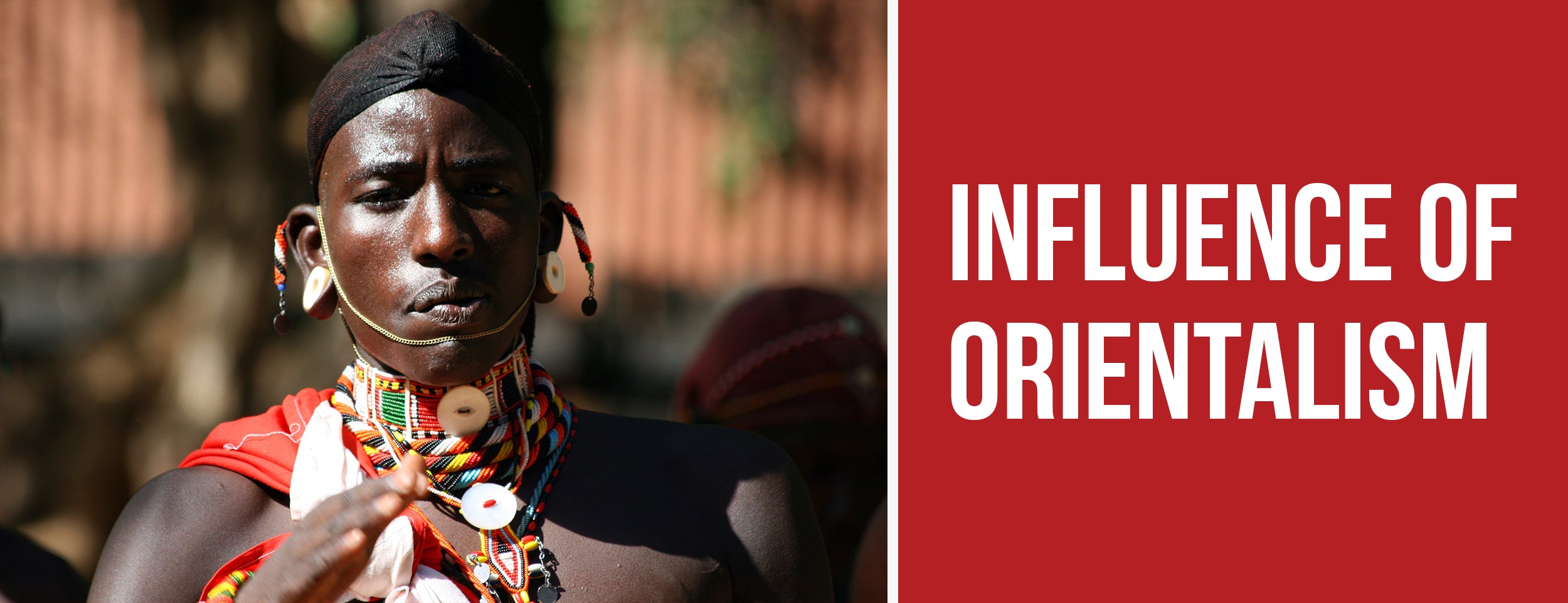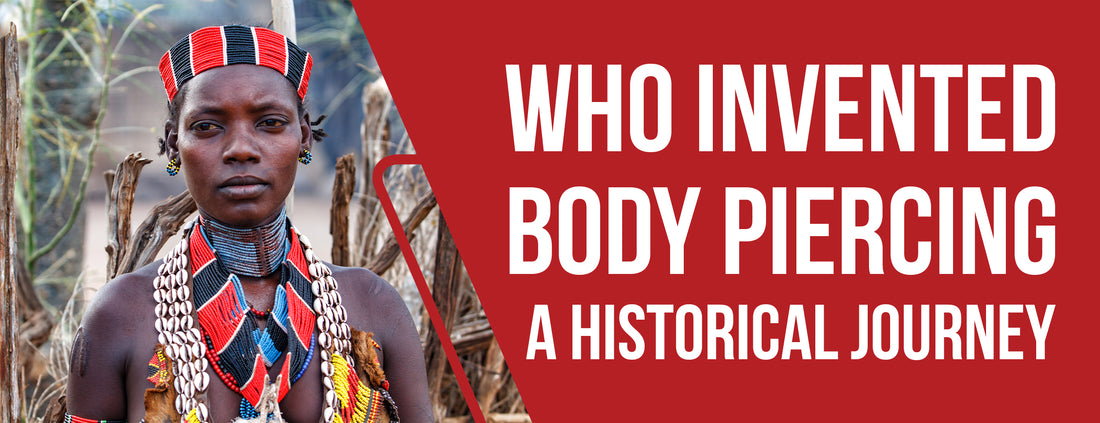Doug Malloy popularized body piercing in the 1960s and 1970s by distorting records. Malloy's pamphlet, Body & Genital Piercing, in Brief, contains many urban legends. Some of these legends include that Prince Albert invented the piercing that bears his name to disguise his large penis in tight trousers and that Roman centurions wore nipple piercings on their capes. Later, these myths were reprinted as facts in body-piercing histories.
Interestingly, the oldest mummy ever discovered in Egypt had ear piercings, and ancient African civilizations had customs of piercing lips and tongues. The earliest evidence of facial piercing was found on a 12,000-year-old man's skeleton in 2020.
In this blog post, we explore who invented body piercing and its diverse cultural and historical aspects, dispelling myths and shedding light on its origins.
Who Invented Body Piercing: A Historical Journey

Body piercing, a practice that has stood the test of time, traces its roots to various cultures worldwide. While it has evolved significantly over the centuries, the essence of body modification remains deeply embedded in human history. We dispel myths and shed light on the history of body piercing here.
Origins and Myths
Body piercing, focusing on the ears, mouth, and nose, has been a prevalent practice in almost every society. Notable exceptions, such as the glans penis piercing among Borneo tribes and mentions of penis jewelry in the Kama Sutra, challenge the conventional understanding of piercing traditions. However, many stories surrounding the origins of piercings, like the myth about Prince Albert's penis ring, have been debunked as modern fables.
Jim Ward, a pioneer in the piercing community, revealed in an interview that most names given to piercings are invented. Doug Molloy, a friend of Ward, contributed to the romanticization of piercing by creating fictional characters and histories. Despite attempts to verify piercing histories, only the ampallang and apadravya piercings have verifiable origins.

Stretched Earlobes Through Time
Expanded ear piercings, commonly known as stretched earlobes, have a rich tradition spanning centuries and diverse cultures. The ease of piercing the earlobe likely made it one of the first attempts at body modification. Evidence of pierced and stretched earlobes dating back over 5,000 years was found in an Austrian Glacier.
Primitive tribes initially pierced their ears for magical purposes, believing that metal repelled demons and spirits. Sailors adopted ear piercings for improved eyesight, and the jewelry was paid for a Christian burial if their bodies were washed ashore. Ear piercing also became a ritual symbolizing puberty in various societies.
Ancient Egyptians adorned themselves with stretched earlobes, while the Romans pierced their nipples to signify strength and unity in the army. In Central and South America, lip labrets were considered a symbol of beauty, with some tribes stretching their lips using progressively larger wooden plates.
Ancient Civilizations and Body Piercing

Ancient civilizations, like the Egyptians and Romans, embraced body piercing for various purposes. Egyptians adorned themselves with stretched ear lobes, reserving certain piercings for the royal family. The Romans, practical in their approach, pierced nipples as a badge of honor, symbolizing strength and dedication to the Roman Empire.
Warrior tribes, including the Aztecs, Mayans, and American Indians, practiced tongue and septum piercings as part of religious rituals. Materials like bone, tusks, and feathers were common for these piercings. In Central and South America, women with lip labrets were considered more beautiful, stretching holes with wooden plates and adorning lip labrets made of jade and gold.
Piercing Through the Ages
The Renaissance and Elizabethan eras saw male nobility flaunting earrings as symbols of wealth. Nose piercing gained popularity in the West during the 20th century, influenced by the travels of young hippies seeking enlightenment in India.
Individuals pierce their bodies for various reasons, including religious beliefs, self-expression, aesthetic value, sexual pleasure, cultural conformity, or rebellion. The diversity of styles and techniques across cultures highlights the significance of body piercing in marking rites of passage.

Evolution of Piercing in Modern Times
The 90s marked a golden age of modern piercing, with pop culture influencing a surge in interest. Queen Elizabeth II's decision to have her ears pierced on coronation day challenged prevailing notions about piercings, contributing to their acceptance.
Piercings have a long cultural and spiritual history, predating even Ancient Egyptians. However, Christian values, particularly during the rise of Protestantism, deemed piercings as pagan and subversive, leading to periods of unacceptability.
In the 1970s, the Gauntlet opened on Santa Monica Boulevard, becoming the first piercing shop in the U.S. This marked a pivotal moment as piercings transitioned from underground practices to mainstream acceptance. Jim Ward, a key figure in this movement, was crucial in bringing piercing out of the closet.
The 90s emerged as the golden decade of piercing, with subcultures and piercing intertwining. Nipples, septum, genitals, and almost every conceivable body part became a canvas for piercing, reflecting the influence of BDSM and punk communities on fashion.
Influence of Orientalism

Orientalist fascination with Indian women catalyzed the prevalence of nose piercings in the West. In the early 20th century, French performer Mademoiselle Polaire popularized South Asian-inspired nose rings as exotic adornments. The 1960s witnessed a resurgence of nose piercings as Western women adopted the practice into fashion.
Challenges to Christianity and Cultural Appropriation
Despite the long and rich history of body piercing, it faced challenges throughout the ages. The rise of Christianity deemed piercings as pagan and provocative, reflecting a rejection of the Judeo-Christian view of the unaltered body. As Britons explored the globe, piercings became a tool for colonialists to assert supposed superiority.
In India, where skin piercing had deep roots in religious practices, the British invasion brought disdain for the tradition. Even within India, classism and racism led to the rejection of predominantly Tamil practices.

Conclusion
Body piercing has been practiced for thousands of years, from ancient Africans to the Egyptians, and has been popularized by Doug Malloy over the last few decades. It gained popularity in modern times thanks to Doug Malloy. While body piercing is often seen as a fashion statement, it has a deeper cultural and historical significance.
Through body piercing, we can gain a better understanding of human expression and the diverse heritage that it represents. So, the next time you see a shiny stud or an elaborate barbell, you can appreciate its aesthetic value and rich cultural history.





![The Recovery Time and Stages of Nipple Piercings [Best Practices]](http://drnumb.com/cdn/shop/articles/How_Long_Do_Nipple_Piercings_Take_To_Heal__3_Stages_Explained.jpg?v=1714373243)

